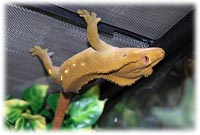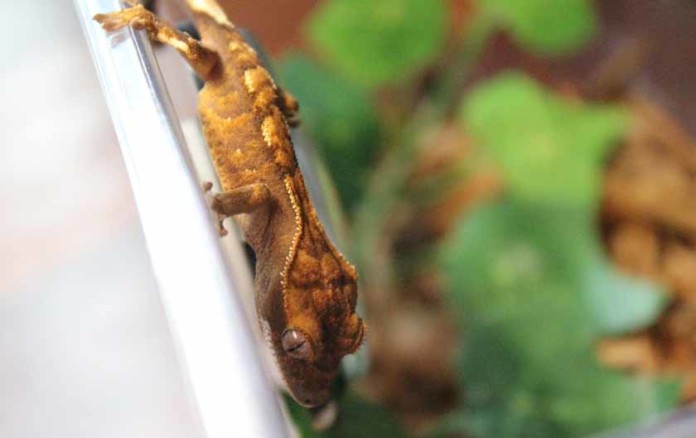The crested gecko foot is truly unique. It is small with toe pads that are specially equipped to allow the gecko to climb many surfaces, including glass. The toes are tipped with tiny claws to help them climb and grasp.
Infrastructure
Each of the crested gecko’s toe pads contains thousands of tiny hairs called setae, which are divided into hundreds of smaller hairs called spatulae. These tiny structures employ the van der Waals force to facilitate the gecko’s climbing on many surfaces. The van der Waals force is the attractive force between molecules and is contributed to what enables the tiny hairs to adhere to surfaces.
Double-Jointed
The crested gecko also has double-jointed toes, which allow them to step from the surface they are on by lifting their toes from the tip inward. Often in photographs of the crested gecko, you will notice their toes curled in an upward position.
Problems
 The primary problem with the crested gecko foot is incomplete shedding. When the humidity is not high enough in their enclosure, the crested gecko may not shed properly. The tail tip and toes are the most susceptible to stuck shed.
The primary problem with the crested gecko foot is incomplete shedding. When the humidity is not high enough in their enclosure, the crested gecko may not shed properly. The tail tip and toes are the most susceptible to stuck shed.
If there is shed skin stuck on the toes, it can restrict blood flow and cause the toes to die and fall off. If you notice stuck shed on their toes, soak the gecko in a shallow water dish or on damp paper towels for up to an hour. You should then be able to gently remove the skin with a pair of tweezers.
The crested gecko foot is only a small part of this unique reptile’s makeup. By appreciating the small parts of this animal, you can further admire its overall beauty and distinctiveness. Climbing surfaces is only one of the crested gecko’s many rich characteristics.














